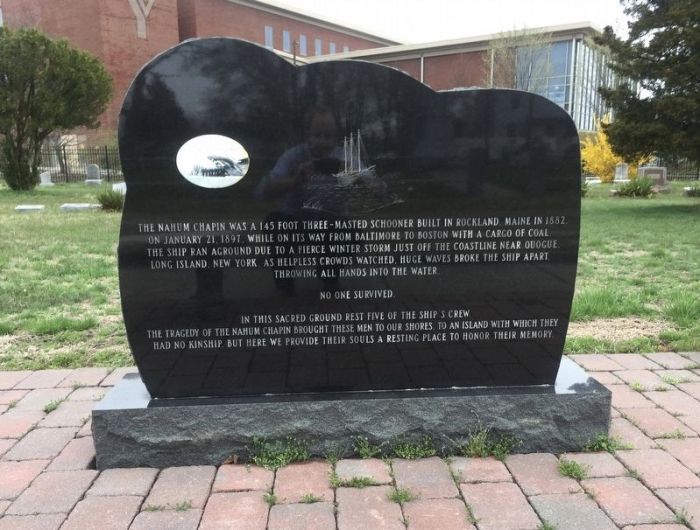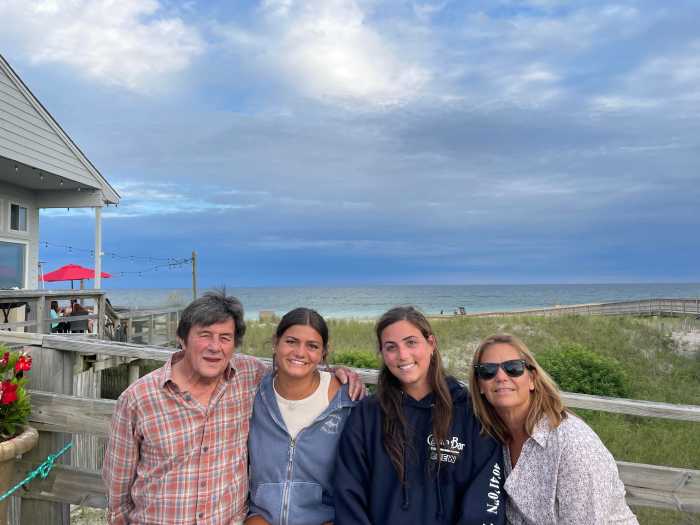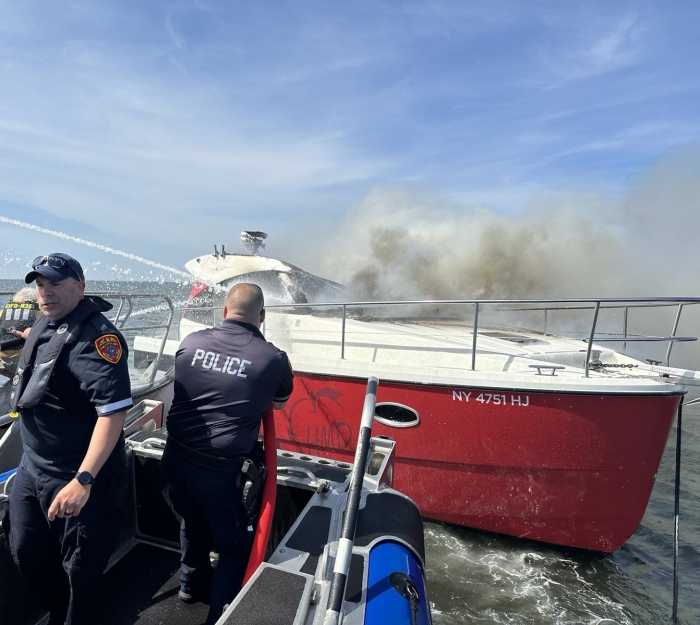Experienced sailors will argue that January gales are the worst, but the best testimony to this statement can be found in Patchogue’s Lakeview Cemetery. Tucked away towards the back of the cemetery is a black monument next to five white headstones. These are five of the nine recovered bodies of sailors who drowned in the frigid depths of the Atlantic in the early hours of January 21, 1897.
Before their demise, they all toiled on the schooner “Nahum Chapin.” Built in Rockland, Maine, in 1882, the 145-foot three-mast ship transported coal for the rapidly industrializing East Coast. Buying a share of ownership of the vessel, Captain Ernest Arey saw the ship as a path to financial stability for his wife and four children. The consistent Hampton Roads, Virginia, route to Boston encapsulated the sound investment. Mid-January 1897 seemed routine; a payload of 13,000 tons of coal was loaded on the ship, and the best routes were charted to meet the delivery timeline at West End Street Railway Company in Boston. When Captain Arey and his crew passed Sandy Hook, New Jersey, in the early morning of January 21, the ship encountered 50-60 MPH freezing winds, heavy rains, and dense fog. As visibility became impossible, the waves violently battered the ship’s hull. Around four in the morning, the “Nahum Chapin” struck a sand bar full sail 300- feet from the shoreline of Quogue. On patrol, Charles Carter notified Life Saving Station Commander Captain Charles Herman, who was half a mile away. By 4:30 a.m., the dispatched Life Saving crew reached the shore adjacent to the distressed schooner. The low visibility and rough surf made it impossible for Herman’s crew to send a lifeboat or line to the ship. Despite the dire reality, the life-saving crew fired rockets from the shore to let the “Nahum Chapin” crew know help was coming. As the fog broke, Herman witnessed six people in the portside rigging and three more on the flying jib boom (rigging on the bow). After several attempts to shoot lines into the rigging, one reached the stranded men by seven in the morning. Hopes suddenly became dashed when a giant wave lifted the ship and smashed its ribs, sending all the men into the icy water. According to local newspapers, Captain Herman was overheard saying to one of his men, “For the lips of every man aboard are now sealed in death.”
The first body recovered around 8:30 a.m. was of a stocky man with a fire-red beard. In his pockets were his credentials, which identified him as Captain Arey and the ship as the “Nahum Chapin.” The ship’s roster was not recovered, and the names and total numbers abroad were unclear. Not far from where the Captain’s body, a child’s doll chair floated in the surf. Speculation of the Captain’s wife and daughter aboard became the central focus of the headlines the following day. In the days that followed, the sea gave up her dead. Eight people, including first mate Alfred Davis, second mate J.C. Hogan (AKA I.A. Maddock), deckhands Albert Lowe, Oscar Anderse, Loy Anderson, John Neiber, Victor Stevenson, and A. Lucyanich, washed up along the shore. Second mate Hogan’s body was discovered disfigured and half-dressed, as still in a rush from his bunk to the deck. Local druggist E.W. Babcock found a shoe and leggings made of canvas confirmed to be from the wreck, which he added to his collection of shipwreck artifacts for curiosity seekers to come gawk at. Speonk undertaker helped recover six of the bodies and bury them in Quogue Cemetery. Five of the bodies were reburied with full headstones in the Lakeview Cemetery in Patchogue at the expense of Mrs. Augusta J. Weeks.
Fifty years later, fisherman Captain Ed Winters and Skipper William Winters were running a dragger below their boat when they snagged a 1600-pound anchor. The anchor was later identified as the anchor of the “Nahum Chapin.” Currently, the anchor sits in front of Quogue Library as a relic of the infamous winter gales of January.




























